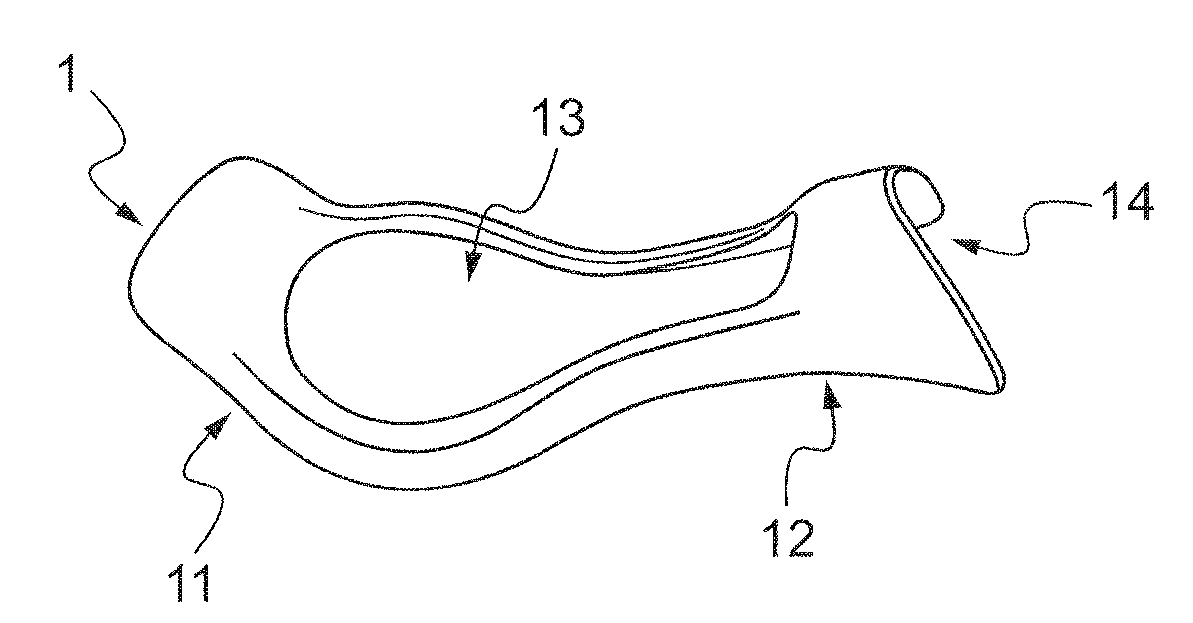Riding saddle and its method of manufacture
- Summary
- Abstract
- Description
- Claims
- Application Information
AI Technical Summary
Benefits of technology
Problems solved by technology
Method used
Image
Examples
Embodiment Construction
[0048]FIG. 1 is a diagrammatic view of a tree 1. The tree 1 is semi-rigid presenting a posterior portion 11, i.e. at the rear of the saddle, and thus remote from the horse's withers.
[0049]Furthermore, the tree is provided with an anterior portion 12, i.e. beside the horse's withers. It should also be observed that the tree possesses a rounded end 14 for allowing the horse's withers to move vertically.
[0050]Furthermore, there can be seen an opening 13 in the tree, the center of the tree being hollow. The opening 13 is then filled with straps on which the padding and covering of the saddle will rest.
[0051]It is explained below that other elements such as the flaps and the girth straps are also secured to the tree 1 so as to constitute a first assembly referred to for convenience, as a “seat”.
[0052]FIG. 2 is a diagrammatic view from beneath of a trapezium 2 of the invention. It can be seen that this trapezium is a semi-rigid plate and not just a piece of leather.
[0053]The trapezium 2 c...
PUM
 Login to View More
Login to View More Abstract
Description
Claims
Application Information
 Login to View More
Login to View More - R&D
- Intellectual Property
- Life Sciences
- Materials
- Tech Scout
- Unparalleled Data Quality
- Higher Quality Content
- 60% Fewer Hallucinations
Browse by: Latest US Patents, China's latest patents, Technical Efficacy Thesaurus, Application Domain, Technology Topic, Popular Technical Reports.
© 2025 PatSnap. All rights reserved.Legal|Privacy policy|Modern Slavery Act Transparency Statement|Sitemap|About US| Contact US: help@patsnap.com


